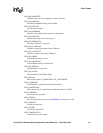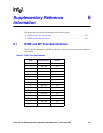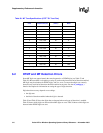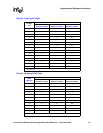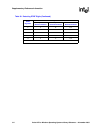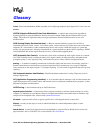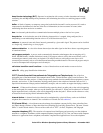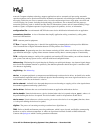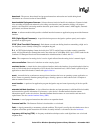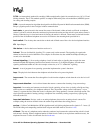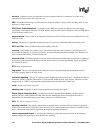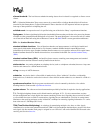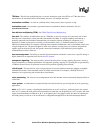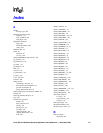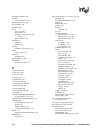
Voice API for Windows Operating Systems Library Reference — November 2003 545
network. Computer telephony technology supports applications such as: automatic call processing; automatic
speech recognition; text-to-speech conversion for information-on-demand; call switching and conferencing; unified
messaging, which lets you access or transmit voice, fax, and e-mail messages from a single point; voice mail and
voice messaging; fax systems, including fax broadcasting, fax mailboxes, fax-on-demand, and fax gateways;
transaction processing, such as Audiotex and Pay-Per-Call information systems; and call centers handling a large
number of agents or telephone operators for processing requests for products, services, or information.
configuration file: An unformatted ASCII file that stores device initialization information for an application.
convenience function: A class of functions that simplify application writing, sometimes by calling other,
lower-level API functions.
CPE: customer premise equipment.
CT Bus: Computer Telephony bus. A time division multiplexing communications bus that provides 4096 time
slots for transmission of digital information between CT Bus products. See TDM bus.
data structure: Programming term for a data element consisting of fields, where each field may have a different
type definition and length. A group of data structure elements usually share a common purpose or functionality.
DCM: configuration manager. A utility with a graphical user interface (GUI) that enables you to add new boards to
your system, start and stop system service, and work with board configuration data.
debouncing: Eliminating false signal detection by filtering out rapid signal changes. Any detected signal change
must last for the minimum duration as specified by the debounce parameters before the signal is considered valid.
Also known as deglitching.
deglitching: See debouncing.
device: A computer peripheral or component controlled through a software device driver. An Intel® voice and/or
network interface expansion board is considered a physical board containing one or more logical board devices, and
each channel or time slot on the board is a device.
device channel: An Intel® voice data path that processes one incoming or outgoing call at a time (equivalent to
the terminal equipment terminating a phone line).
device driver: Software that acts as an interface between an application and hardware devices.
device handle: Numerical reference to a device, obtained when a device is opened using xx_open( ), where xx is
the prefix defining the device to be opened. The device handle is used for all operations on that device.
device name: Literal reference to a device, used to gain access to the device via an xx_open( ) function, where
xx is the prefix defining the device to be opened.
digitize: The process of converting an analog waveform into a digital data set.
DM3: Refers to Intel® mediastream processing architecture, which is open, layered, and flexible, encompassing
hardware as well as software components. A whole set of products from Intel are built on DM3 architecture.
Contrast with Springware which is earlier-generation architecture.



